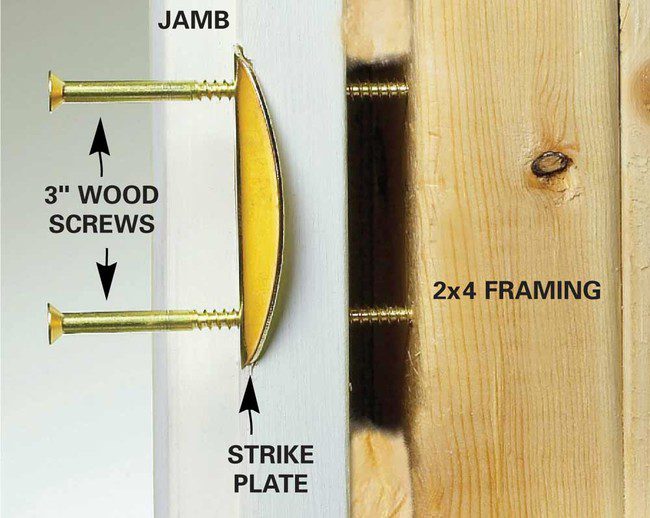Table of Content
Don’t worry about those dry days of summer when it comes to fan speed. It never hurts to augment the cooling power of AC with a room fan. Ceiling fans represent a beloved permanent fixture, but a trusty portable fan also works wonders. Fans increase general air circulation, preventing air from stagnating and accumulating unwanted heat. Combined with an AC unit, fans create the perfect conditions for cooperative cooling.
To make sure your AC isn't running all night, however, consider programming your thermostat to readjust the temperature after everyone in the household is asleep. "For nighttime temperatures, precool your bedroom before going to sleep, and then program your thermostat at 2-4 degrees higher for a while you're sleeping," Munin suggests. If your home is multilevel, remember that heat rises and cold air falls, Schraeder says.
Invest in a smart thermostat
To prevent cool air from escaping, make sure your home is properly sealed and insulated. Check for air leaks around windows and doors, and use a caulk gun ($11, The Home Depot) to seal any gaps that could make your cooling system work overtime. Inspect the attic's insulation and head to your local home improvement store to get more if needed. Reduce the load on your air-conditioner by shading east-, south-and west-facing windows. Outside, consider extending roof eaves or adding a trellis or awning to shade windows. Add tinted window film ($30, The Home Depot) to minimize the effects of radiant heat and UV light while maintaining views.

Fortunately, there are several low-cost ways to cool your house in Denver every summer. We outlined the best strategies you can follow in this guide, so be sure to read on. Trees not only provide shade, but also bring down the temperature around it. And if you live in a house with a sizeable front and backyard, do make it a point to strategically plant large trees.
It's An Olaplex World And We're Just Living In It. But What Does It Actually Do?
While some may prefer the minimalist design, it does create some challenges. In fact, most modern buildings rely on high quality reflective glass or expensive cooling systems to keep the indoor conditions comfortable during summer. Some even have quite futuristic designs , and that’s not something you can say about the ceiling fans.

The temperature in your attic can reach 150 degrees on a hot summer day, a situation that if left unchecked can drive up cooling costs by as much as 40 percent. But if humidity is a concern, don’t waste your time on fans alone. Running your home's air-conditioner on full blast for long periods can quickly cause your energy bill to skyrocket. And with many of us working remotely, we're home during the peak mid-day heat more than ever. So use these tips for the most effective ways to cool a house and lower cooling costs to beat the heat and keep your budget in check this summer. This way, you can take the cool air with you, and you avoid having two units running at the same time.
Still Hot? Try a Whole House Fan
Pay special attention to west-facing rooms late in the day. Shades and blinds to consider include roller shades , venetian-type micro-blinds, reflective curtains and insulated curtains (the most expensive, at $100 per window). Two exterior options are to install awnings or plant shade trees. You'll save the most money by running the fan only when you're in the room. A motion-detector switch (around $20), which turns the fan on when you enter a room and off when the room is empty, is a good addition. However, if you have pets that move in and out of the room, make sure the switch can be turned off manually.

When you’re darting out to work, remember to flick that switch. We all know and love the classic “window rattler” AC unit, but you need the right type of windows to use one. These two other options work where window units don’t. A yearly maintenance checkup by a professional can also help keep your air-conditioner running smoothly. "Just like an oil change for your car, these tune-ups are essential to help your system run more efficiently and extend its life," Munin says. This process will likely include system tests, a filter check, and a thorough cleaning of the unit inside and out.
More expensive ones will tend to be more effective, but you can get an awful lot out of a cheaper option. However, this summer has taught us that when the weather gets more extreme, we need something more effective in place. Ill-maintained HVAC systems, airflow problems, and faulty thermostats are prevalent.

You can re-purpose packaging cling wraps, provided they don’t have holes or damages in them. Direct sunlight can heat up your rooms and make your A/C unit work harder, which adds to your electric bill. During the hottest time of day, draw your shades to block out the sun on the side of the house where it’s the brightest. Draw the blinds during the hottest parts of the day to keep heat out that will help keep the space cooler- that’s true. I am not a big fan of using air condition, so I used to find of these cooling methods. Whole house fans use just ten percent of the energy of a traditional AC unit and are much cheaper to install.
If you typically keep your home at 72°F, for example, try bumping the temperature up to 75 for a few hours and see how you feel. According to Energy.gov, dialing the temperature back 7-10°F from its typical setting for 8 hours a day can reduce energy costs by 10% annually. You may never enter your attic in the summer months, but it is hot, and that heat permeates the rest of your house. That’s why Whitfield suggests installing a solar attic fan to draw that hot air out and promote fresh air circulation. At this stage you may be tempted to consider a portable air conditioning unit, which is even more effective. However, these will set you back more than even the most expensive fans.
Every subsequent degree which you accept will yield savings on your electric bill. Explains that this old-school cooling technique can cool large houses for a fraction of the cost of central air, but only in very specific circumstances. It can be challenging to fall asleep when you're uncomfortably warm, so you might prefer to lower your home's temperature at night. And because the temperatures outside usually dip as the sun goes down, setting your thermostat back a couple of degrees at night is generally not a problem, Munin says.
It has been the Tennessee Housing Development Agency's top lender annually since 2003, as well as the Volunteer State's leading USDA lender every year since 2014. As it continues to expand its footprint, MIG remains committed to serving borrowers across the Southeast. Great tips, my bedroom is slightly hotter than my usual room so I was curious to get some online solutions. I love the way you have insulated the Attic Walls which is a bonus for me to get it done. When trying to keep a home cool without AC, it’s important to focus on keeping yourself – not the room – cool.
Here, home experts offer their most cost-effective strategies for keeping a cool space. Getting your windows insulated not only keeps heat from entering your sunroom in the summer, but it will also keep the cold from entering your sunroom in the winter. Installing window shades into your sunroom can come in handy during the summer. Not only will they deflect a lot of the heat that could possibly be entering your sunroom, but they can actually add a sense of privacy in the evening and at night. Shades or blinds also offer flexibility as you can open and close them as you please. Sunrooms are great places to relax, clear your mind, and even entertain your guests.


